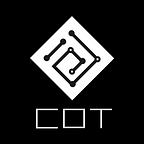COT system architecture design for AI+IoT fusion blockchain technology
Overall architecture of the system
The service side
Device service components: complete data communication, protocol conversion, data analysis and other functions with the device;
Web services components: Client-oriented response services that provide interfaces in the form of REST API.
Security management framework: Security management framework based on block chain authentication, authentication, data protection and intelligent contract.
Service management framework: Complete the construction of distributed service management framework. Support rule management, coordination, scheduling and other management functions.
Business processing components: Application-oriented business logic processing functional components.
Machine learning component: Algorithm component of machine learning and deep learning for Internet of Things.
Data management framework: A management framework that implements functions such as abstract data access interfaces, building data and service mapping rules, etc.
System functional architecture
The server architecture is the core of the whole system. The performance, stability, scalability, security and other factors of the Internet of things application system largely depend on the design and implementation of the server.
Equipment Service Components:
MQTT proxy Server: Communication component with device side based on MQTT protocol.
CoAP proxy server: Communication component with device side based on CoAP protocol.
Websocket server: A functional component of the Websocket server.
Message parsing: A functional component for decompressing, parsing and formatting all kinds of packets and protocol packets.
Serialization: A functional component that serializes, deserializes, and formats objects of a binary data stream.
Device adaptation: Realize the mapping between device instruction set and service function logic, and can be configured.
Load balancing: Load balancing on the device side.
Web service components:
Http server: Based on Http/Https and client server functions;
Load balancing: Client-oriented load balancing is implemented.
Asynchronous Web Framework: Web services framework that supports highly concurrent asynchronous IO processing.
REST API: Implement interfaces that conform to REST API design standards.
Security management framework:
Multi-source authentication: Based on business requirements, it abstractly encapsulates blockchain services to realize multi-dimensional authentication, trust transfer, authorization and other functions of the authenticator.
Data security protection: Abstract and encapsulate block chain services to achieve data security protection functions according to business requirements.
Intelligent contract: The intelligent contract service of block chain is invoked to realize the mapping relationship between business layer and intelligent contract script.
Security management policy and implementation for network, system and data.
Service management Framework:
Rule engine: Implements a rule management engine that resolves according to business rules and maps to service objects to drive service execution.
Service coordination framework: Realize the distributed service functions of service from registration publication to resource management, status monitoring, permission control and RPC remote invocation.
Service scheduling engine: An engine that schedules, allocates, executes, and monitors service instances through a queue mechanism.
Machine learning components:
Machine learning algorithm component: Provides the classification and clustering algorithm component in the data analysis and mining scene of the Internet of Things. Support SVM, KNN, PCA, decision tree and other basic algorithms.
Deep learning algorithm components: Provide CNN, RNN, LSTM and other deep learning algorithms for voice, image and text applications of the Internet of Things.
Intelligent hardware algorithm component: AI algorithm component combined with intelligent hardware customization.
Data management framework:
Metadata management component: An administration toolkit that provides the definition, collection, configuration, and distribution of metadata.
Master data management components: provide streaming processing and computing, distributed file system, search engine, cache database, relational database and other data side access services, management services set of functional components.
Blockchain data access interface: The unified interface encapsulates blockchain data access, belongs to the logical abstraction layer, and separates the business-oriented development from the blockchain management implementation.
System technical architecture
Technology stack and development language analysis:
The mainstream language of full stack development for Internet of Things, Python and JavaScript comparison:
Conclusion:
The server side and the data side take Python as the main development language.
The client takes JavaScript as the main development language;
The device side to C/C++/Python as the main development language.
Chains Of Things
- Visit our Website
- Follow us on Twitter
- Join our Discord Server
- Join our Telegram Community
- Subscribe to our Announcements Channel
